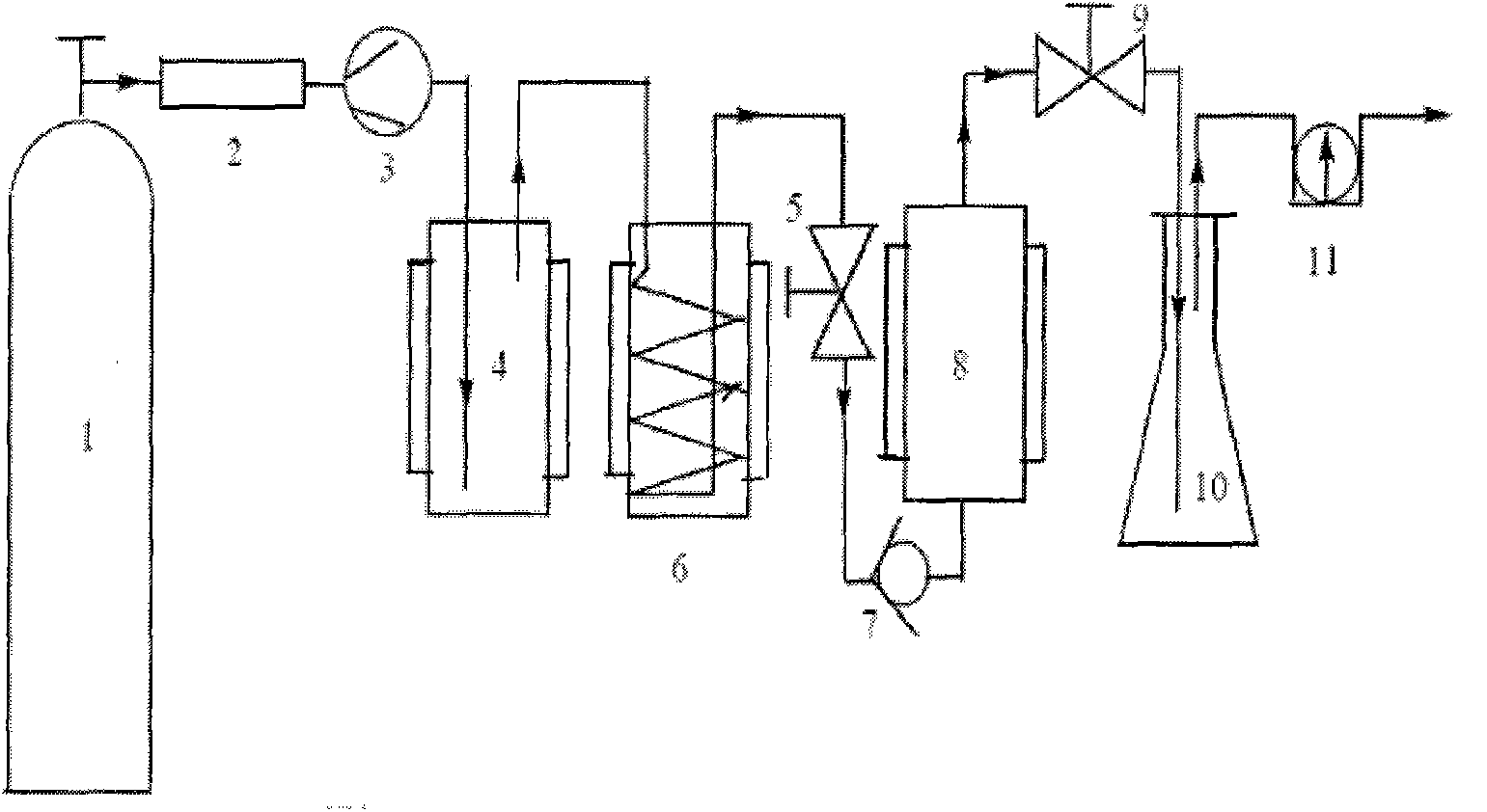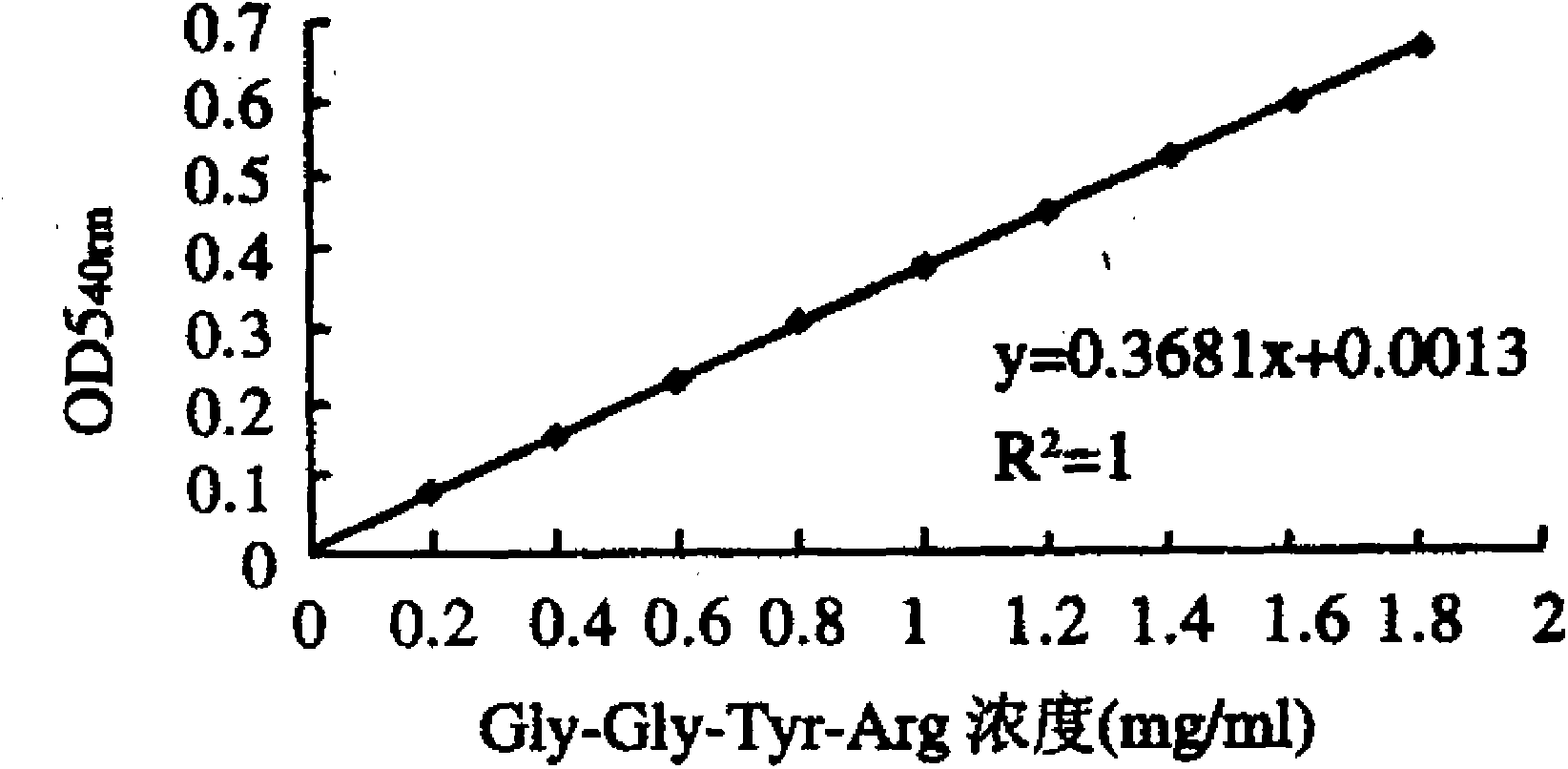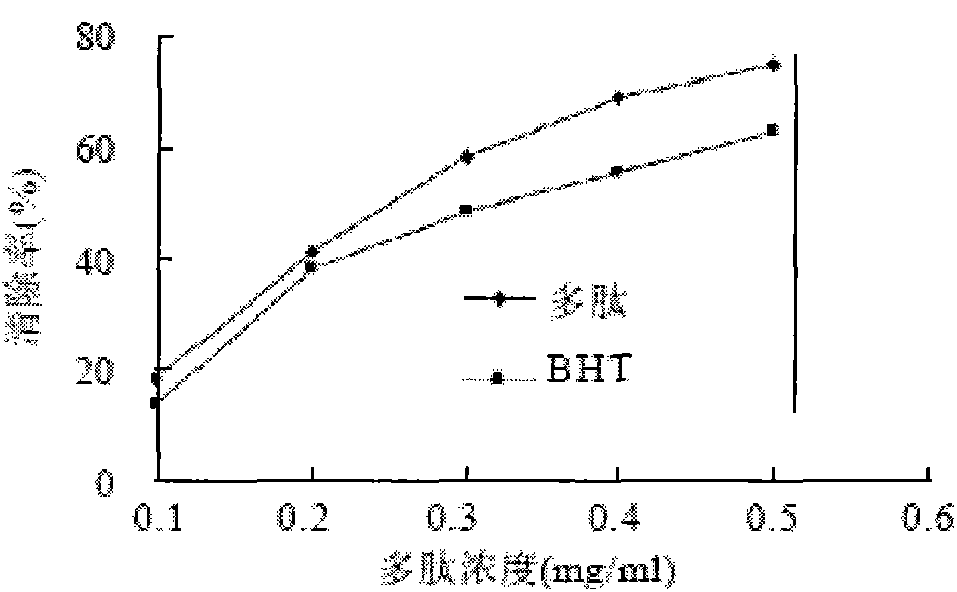Method for preparing queen bee embryo peptide by enzyme hydrolysis method
A technology of enzymatic hydrolysis and queen bee, which is applied in compound screening, food science, material inspection products, etc., can solve the problems of no patent reports on hydrolyzed polypeptides, and achieve the effect of improving product utilization value, biological activity, and product quality
- Summary
- Abstract
- Description
- Claims
- Application Information
AI Technical Summary
Problems solved by technology
Method used
Image
Examples
Embodiment Construction
[0038] The specific embodiments of the present invention will be described in further detail below in conjunction with the drawings and embodiments. The following examples are used to illustrate the present invention, but not to limit the scope of the present invention.
[0039] Step 1: Sample pretreatment: Collect 2 to 3 day old queen bee larvae (Queen bee embryos, 2 to 3 day old queen bee larvae have not grown and have very similar respiration rates. Later, as feeding conditions change, they begin to differentiate into queen worker bees. It is the basis for selecting the queen bee larvae for 2 to 3 days) appropriate amount, rapidly frozen at -80°C during the life of the queen bee larvae, freeze-dried with a freeze dryer, and ground the dried queen bee larvae sample into powder.
[0040] Step 2: Degreasing the queen bee larvae powder: put the pretreated queen bee larvae powder sample into figure 1 The supercritical extraction device shown is defatted, the queen bee larvae powder i...
PUM
 Login to View More
Login to View More Abstract
Description
Claims
Application Information
 Login to View More
Login to View More - R&D
- Intellectual Property
- Life Sciences
- Materials
- Tech Scout
- Unparalleled Data Quality
- Higher Quality Content
- 60% Fewer Hallucinations
Browse by: Latest US Patents, China's latest patents, Technical Efficacy Thesaurus, Application Domain, Technology Topic, Popular Technical Reports.
© 2025 PatSnap. All rights reserved.Legal|Privacy policy|Modern Slavery Act Transparency Statement|Sitemap|About US| Contact US: help@patsnap.com



